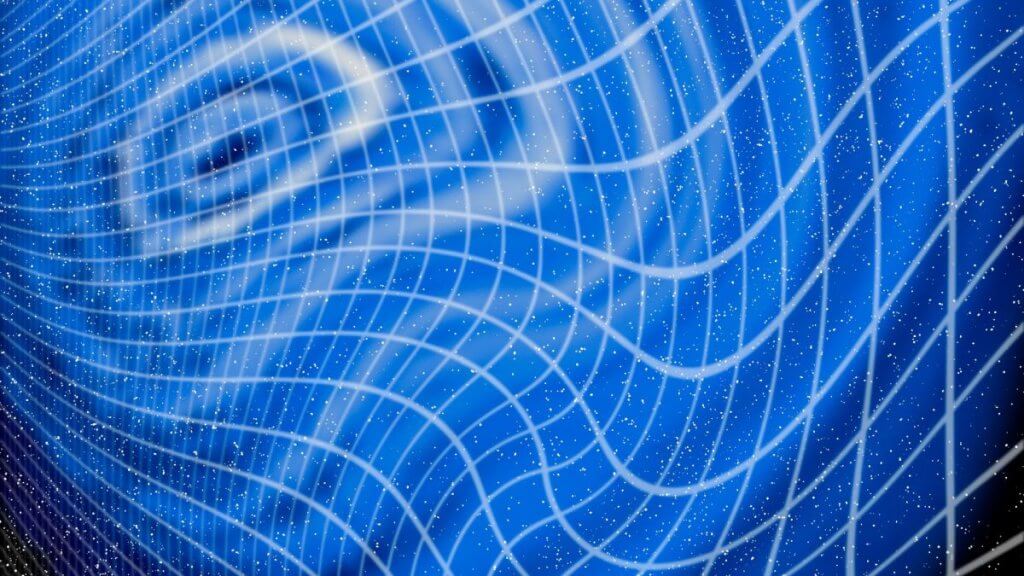The early universe may have been such a violent place that space-time itself fractured like a pane of glass. Those fractures would have released floods of gravitational waves, and a team of astronomers has discovered that we may have already detected these ripples in the fabric of space-time.
The team, who reported their results recently in a paper submitted for publication in the Journal of Computational Astrophysics and published on arXiv.org (opens in new tab), claim that they have seen evidence for so-called domain walls in the early universe.
When our universe was incredibly young, it was also incredibly exotic. The four forces of nature were bound up into a single, unified force. We do not know what that force looked like or how it operated, but we know that as the universe cooled and expanded, that unified force fractured into the four familiar forces we have today. First came gravity, then the strong nuclear force splintered off, and lastly, the electromagnetic and weak nuclear forces split from each other.
Related: The history of the universe: Big Bang to now in 10 easy steps
With each of these splittings, the universe completely remolded itself. New particles arose to replace ones that could exist only in extreme conditions previously. The fundamental quantum fields of space-time that dictate how particles and forces interact with each other reconfigured themselves. We do not know how smoothly or roughly these phase transitions took place, but it’s perfectly possible that with each splitting, the universe settled into multiple identities at once.
This fracturing isn’t as exotic as it sounds. It happens with all kinds of phase transitions, like water turning into ice. Different patches of water can form ice molecules with different orientations. No matter what, all the water turns into ice, but different domains can have differing molecular arrangements. Where those domains meet walls, or imperfections, fracturing will appear.
Probing the GUT
Physicists are especially interested in the so-called GUT phase transition of our universe. GUT is short for “grand unified theory,” a hypothetical model of physics that merges the strong nuclear force with electromagnetism and the weak nuclear force. These theories are just beyond the reach of current experiments, so physicists and astronomers turn to the conditions of the early universe to study this important transition.
The GUT phase transition, which occurred when the universe was the barest fraction of a second old, may very well have left behind domain walls, a network of boundaries between different configurations of space-time. These defects could not have lasted long, however. If they persisted for a few seconds, or even minutes, their intense energies would have thrown off the process of nucleosynthesis, which gave rise to all of the primordial hydrogen and helium in the universe or distorted our images of the cosmic microwave background (CMB), the leftover radiation from the Big Bang.
So this interconnected set of domain walls had to decay into other particles — either normal particles, like electrons or quarks, or more exotic particles, like some form of dark matter. Either way, that decay process, coupled with the undulating motion of the domain walls themselves, would have released a flood of gravitational waves that could persist to the present-day universe.
Surveying the domain
Those gravitational waves would be incredibly weak, and impossible to detect with existing ground-based gravitational wave facilities. But for over a decade, several teams of astronomers around the world have instead been looking to pulsars to map gravitational waves sloshing through the universe.
Pulsars are incredibly precise timekeeping objects, able to maintain their rhythm down to less than a millionth of a second. If a gravitational wave passes between us and a set of pulsars, however, that will subtly affect the period of pulsation. By studying large numbers of pulsars for long periods of time, we can hope to find signals of a background frothing of gravitational waves.
These pulsar timing arrays, like the NANOGrav experiment and the European Pulsar Timing Array, have already found hints of a signal. Most astronomers believe this signal is due to the combined action of millions of supermassive black holes colliding with each other over billions of years.
But the new study presents a different picture. The team argues that the signal also could be explained by domain walls decaying in the early universe. Their models allow for the domain walls to decay fast enough to not violate other observations, like the CMB, while still providing a strong enough signal to explain the pulsar-timing-array data.
Because the signals in the data are very faint and not confirmed to come from any particular source, there’s room for this kind of radical proposal. The team argues that future pulsar timing measurements should be able to distinguish their model of decaying domain walls from the traditional picture of colliding supermassive black holes. Also, if their model is accurate, the domain walls should decay into either normal or exotic particles. Either way, that should be detectable with future, much more sensitive CMB measurements.
If the result holds up, it will be a major win for physics: The first time we’ve discovered concrete evidence for GUT phase transitions and the beginnings of a new understanding of physics.
Follow us on Twitter @Spacedotcom (opens in new tab) or on Facebook (opens in new tab).

